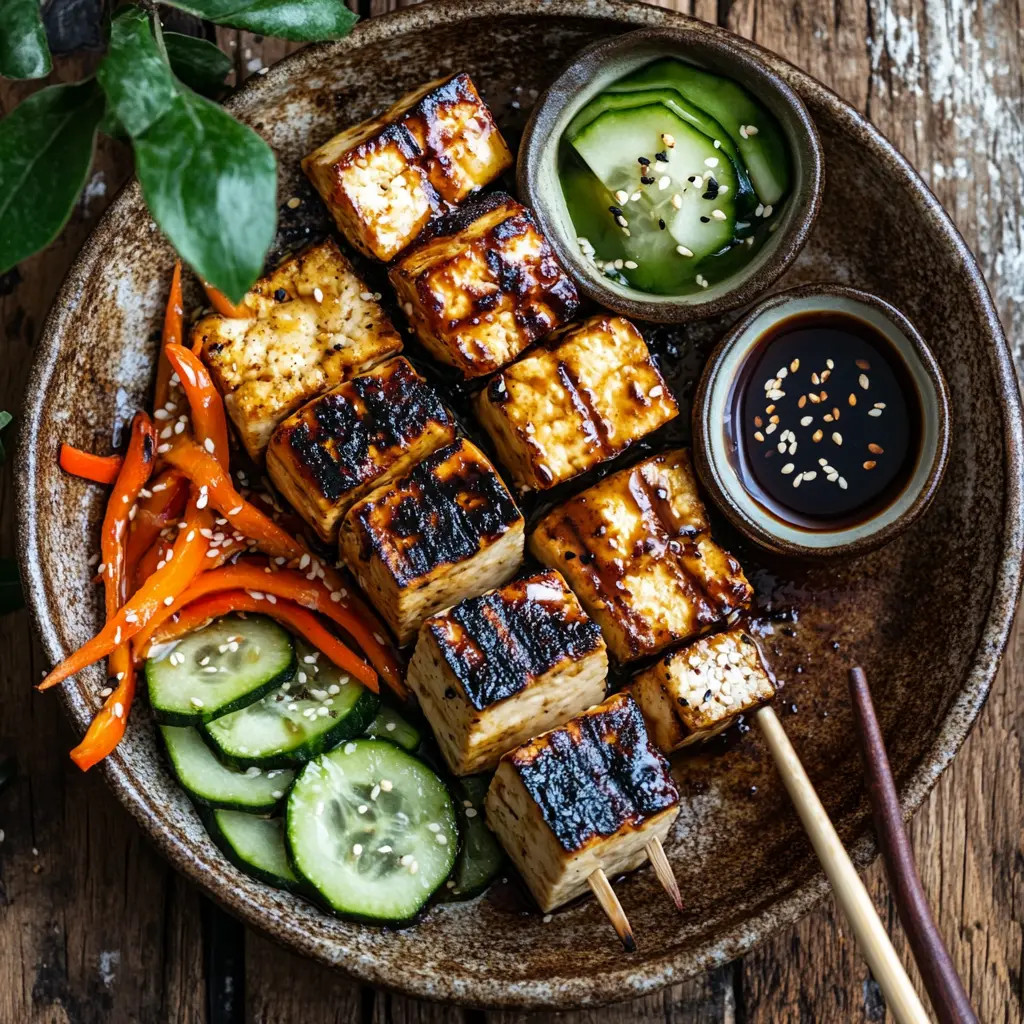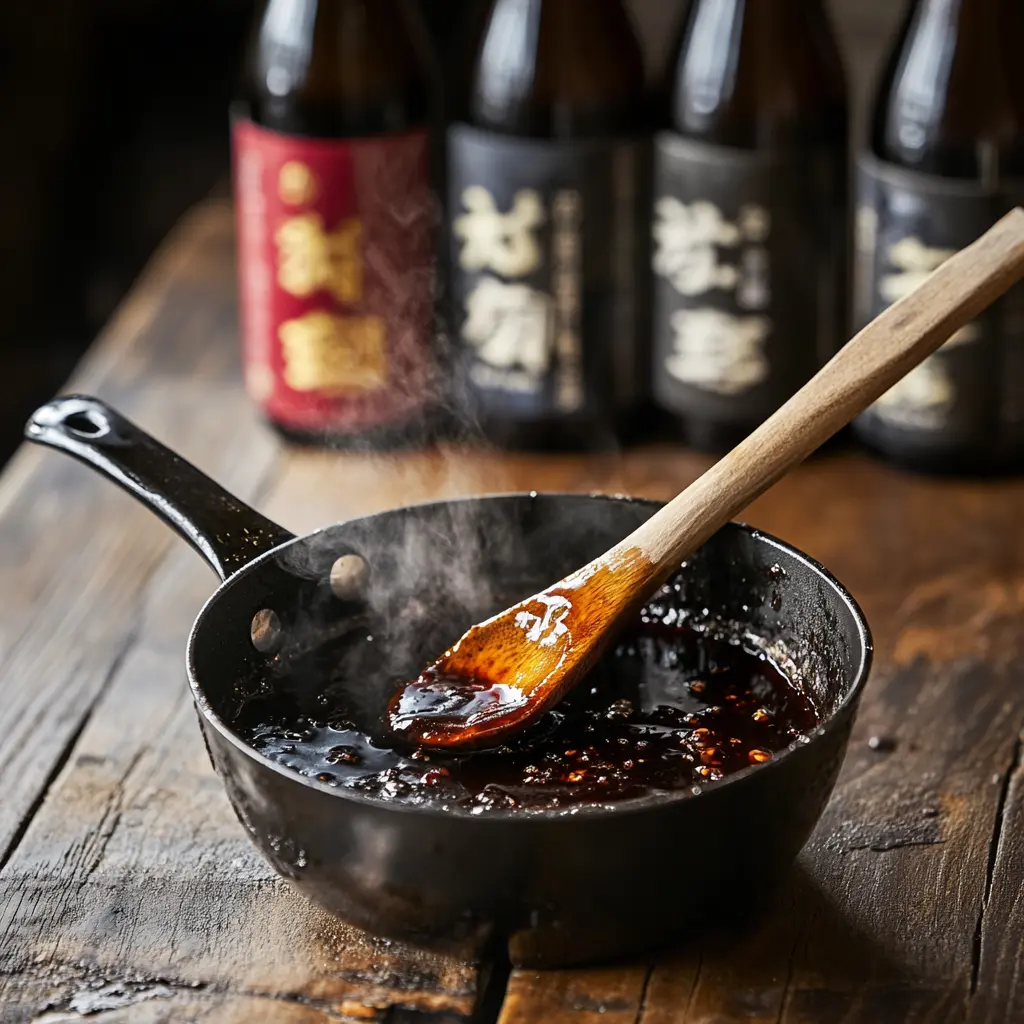Introduction
In the world of cooking, achieving the perfect balance of flavors is an art, and a glaze made with soy sauce and mirin embodies this beautifully. Known for its versatility and rich, glossy finish, this glaze has become a staple in Japanese cuisine, elevating dishes with its savory-sweet harmony. Whether you’re a home cook seeking to recreate authentic Japanese flavors or simply exploring new culinary techniques, this glaze offers an effortless way to transform ordinary ingredients into extraordinary dishes.
The combination of soy sauce and mirin is rooted in tradition, delivering the umami depth of soy sauce and the natural sweetness of mirin in perfect proportions. From meats and seafood to vegetarian dishes, this glaze enhances both flavor and presentation, making it a favorite among chefs worldwide. In this comprehensive guide, we’ll delve into the history, preparation, and creative uses of the soy sauce and mirin glaze, ensuring you master this essential component of Japanese cooking.
1. Understanding Soy Sauce and Mirin
1.1. What is Soy Sauce?
Soy sauce, or shoyu in Japanese, is a liquid condiment with a deep, savory flavor profile. It originated in China over 2,500 years ago and has since become a staple in cuisines worldwide. Known for its umami richness, soy sauce is made through the fermentation of soybeans, wheat, and salt, resulting in a complex, aromatic seasoning.
Varieties of Soy Sauce:
- Light Soy Sauce: Often used in cooking for a milder flavor.
- Dark Soy Sauce: Richer in taste and color, perfect for braises and marinades.
- Tamari: A gluten-free alternative with a smoother texture.
Soy sauce serves as the backbone for countless recipes, including the beloved soy-mirin glaze. Its balance of salty and umami notes complements the natural sweetness of mirin, creating a harmonious flavor.
1.2. What is Mirin?
Mirin is a sweet, amber-colored rice wine that plays an essential role in Japanese cooking. Unlike sake, mirin has a lower alcohol content and a higher sugar concentration, making it ideal for adding sweetness and depth to dishes. Its natural sweetness comes from the fermentation process, which converts rice starches into sugar.
Types of Mirin:
- Hon Mirin: True mirin with 14% alcohol, used in traditional cooking.
- Aji-Mirin: A seasoning version with lower alcohol content and added sweeteners.
- Shio Mirin: Contains salt to make it non-drinkable but still suitable for cooking.
Mirin is often paired with soy sauce to create sauces, marinades, and glazes. Its sweet flavor counterbalances the saltiness of soy sauce, enhancing the overall taste of dishes like teriyaki, sukiyaki, and yakitori.
2. The Combination of Soy Sauce and Mirin
2.1. Traditional Japanese Glazes
The union of soy sauce and mirin has given birth to iconic glazes, most notably the teriyaki sauce. This simple yet versatile glaze combines the umami of soy sauce and the sweetness of mirin, often with added sugar, ginger, and garlic for complexity.
Key Uses:
- Teriyaki Chicken: A classic dish where the glaze caramelizes over grilled or pan-seared chicken.
- Grilled Fish: Enhances the natural flavors of fish like salmon and mackerel.
- Vegetables: Adds a savory-sweet touch to roasted or stir-fried vegetables.
The thick, shiny coating produced by this glaze is not only visually appealing but also locks in moisture, creating a succulent texture.
2.2. Flavor Profile
The flavor profile of a soy-mirin glaze is a masterful balance:
- Umami: From the soy sauce.
- Sweetness: From the mirin.
- Depth: Achieved through caramelization during cooking.
This combination makes the glaze versatile, perfect for a variety of dishes that require a robust yet harmonious flavor.
3. Culinary Applications
3.1. Meat Dishes
The soy sauce and mirin glaze is a game-changer for meat dishes, adding depth and a caramelized finish. Its balance of sweet and savory flavors makes it suitable for a variety of meats, including chicken, beef, and pork.

Alt Text: Teriyaki chicken glazed with soy sauce and mirin, garnished with sesame seeds and scallions.
Popular Dishes:
- Teriyaki Chicken: A crowd-pleaser, teriyaki chicken involves pan-searing chicken thighs or breasts before coating them in a soy-mirin glaze. As the glaze reduces, it clings to the meat, creating a shiny, flavorful crust.
- Glazed Pork Belly: The glaze enhances the richness of pork belly, offering a contrast to its fatty texture.
- Beef Skewers (Yakitori): Tender pieces of beef are marinated and brushed with the glaze while grilling, achieving a smoky-sweet finish.
Tips for Perfect Glazing:
- Use a Basting Brush: Apply the glaze multiple times during cooking for a thick, glossy layer.
- Cook Slowly: Allow the glaze to caramelize without burning for maximum flavor.
3.2. Seafood Dishes
The soy-mirin glaze complements seafood, bringing out its delicate flavors while adding a savory-sweet richness. Whether for fish or shellfish, this glaze is a staple in Japanese-inspired seafood recipes.
Popular Dishes:
- Teriyaki Salmon: A restaurant favorite, this dish involves marinating salmon fillets in the glaze, then searing or grilling them to perfection.
- Glazed Shrimp Skewers: Quick-cooking shrimp take on the glaze beautifully, creating a flavorful appetizer or main course.
- Grilled Eel (Unagi): A traditional Japanese delicacy, eel is often coated in a soy-mirin glaze before being grilled, resulting in a rich, smoky flavor.
Cooking Techniques:
- Brush Frequently: Apply the glaze during the last few minutes of cooking to avoid over-reduction.
- Pair with Rice: The glaze’s bold flavors pair perfectly with plain rice, balancing the meal.
3.3. Vegetarian Dishes
The soy-mirin glaze is not limited to meat and seafood; it also enhances the flavor of vegetarian dishes, making them equally satisfying. Its savory-sweet profile brings out the natural flavors of vegetables and plant-based proteins.

Alt Text: Grilled vegetables and tofu drizzled with soy sauce and mirin glaze on a rustic ceramic plate.
Popular Dishes:
- Glazed Tofu Steaks: Firm tofu, seared and coated with soy-mirin glaze, creates a golden-brown, flavorful crust. Pair it with steamed rice or noodles for a balanced meal.
- Vegetable Stir-Fry: A mix of vegetables like bell peppers, broccoli, and mushrooms tossed in the glaze results in a quick, delicious side dish or main course.
- Glazed Eggplant (Nasu Dengaku): Thick slices of eggplant are grilled and brushed with the glaze, delivering a melt-in-your-mouth texture with a bold umami kick.
Preparation Tips:
- Firm Tofu: Press tofu before cooking to remove excess water for better absorption of the glaze.
- Roasting Vegetables: Brush the glaze on vegetables during the last 10 minutes of roasting for a caramelized finish.
4. Preparing Soy Sauce and Mirin Glaze at Home
4.1. Basic Recipe
Creating a soy-mirin glaze at home is simple and requires just a few pantry staples. This recipe yields a versatile glaze perfect for meats, seafood, vegetables, and more.

Alt Text: A saucepan of glossy soy sauce and mirin glaze simmering on a wooden countertop.
Ingredients:
- 1/4 cup soy sauce
- 1/4 cup mirin
- 2 tablespoons sugar (adjust to taste)
- Optional: 1 clove garlic (minced) and 1 teaspoon grated ginger for extra flavor
Instructions:
- Combine soy sauce, mirin, and sugar in a small saucepan.
- Stir over medium heat until the sugar dissolves.
- Add garlic and ginger, if using, and simmer until the mixture thickens slightly (about 5-7 minutes).
- Let cool before using or store in a sealed container in the refrigerator for up to one week.
4.2. Variations and Enhancements
The basic soy-mirin glaze recipe can be customized to suit your taste or the dish you’re preparing.
Ideas for Enhancements:
- Spicy Glaze: Add a pinch of red chili flakes or a dash of sriracha for heat.
- Citrus Twist: Incorporate freshly squeezed orange or lime juice for a tangy flavor.
- Herbal Notes: Stir in chopped scallions or cilantro for a fresh finish.
5. Nutritional Aspects
5.1. Health Benefits
The soy-mirin glaze not only enhances flavors but also offers several nutritional benefits when used in moderation. Both soy sauce and mirin contain properties that can contribute to a well-balanced diet.
Nutritional Highlights:
- Soy Sauce:
- High in antioxidants, which may help reduce inflammation.
- Contains isoflavones, compounds believed to support heart health.
- Mirin:
- Low in fat and cholesterol.
- Provides a natural source of sweetness, reducing the need for refined sugar.
In addition to their nutritional benefits, these ingredients are relatively low in calories, making the glaze a lighter alternative to cream-based or butter-heavy sauces.
5.2. Considerations
While the glaze has healthful aspects, there are a few considerations to keep in mind:
- Sodium Content: Soy sauce is naturally high in sodium. Opt for low-sodium varieties to reduce intake if necessary.
- Sugar Levels: While mirin contributes natural sweetness, individuals monitoring their sugar consumption should use it sparingly.
- Dietary Restrictions:
- For gluten-free diets, choose tamari or a certified gluten-free soy sauce.
- For alcohol-free preferences, use non-alcoholic mirin substitutes.
By adjusting the recipe or ingredients, the glaze can cater to various dietary needs while retaining its delicious flavor.
6. Cultural Significance
6.1. Role in Japanese Cuisine
The soy-mirin glaze is deeply rooted in Japanese culinary traditions. It is often used in iconic dishes like teriyaki and yakitori, symbolizing the harmony of flavors in Japanese cooking.
Historical Context:
- Origins: The combination of soy sauce and mirin dates back to the Edo period (1603-1868), when these ingredients were staples in Japanese households.
- Festivals and Celebrations: Soy-mirin glazes are frequently used in dishes served during traditional Japanese festivals, reflecting the country’s rich cultural heritage.
6.2. Global Influence
Over time, the soy-mirin glaze has gained popularity worldwide, inspiring chefs and home cooks alike to incorporate it into diverse cuisines.
Examples of Global Use:
- Fusion Cuisine: Incorporating the glaze into Western dishes like grilled chicken burgers or roasted vegetables.
- International Variations: Adding local spices or herbs to adapt the glaze to regional tastes.
This cross-cultural adoption highlights the glaze’s versatility and timeless appeal.
7. Common Questions and Misconceptions
7.1. What is Mirin and Soy Sauce Called Together?
When combined, mirin and soy sauce are often referred to as a “Japanese glaze” or “teriyaki glaze.” This combination serves as the foundation for many classic Japanese sauces, such as teriyaki and sukiyaki sauces. The mixture is celebrated for its balance of umami and sweetness, making it ideal for enhancing a variety of dishes.
7.2. What is Another Name for Japanese Soy Sauce?
Japanese soy sauce is commonly known as shoyu. There are several regional variations of shoyu, each with unique flavor profiles. For example:
- Koikuchi Shoyu: The most common type, versatile for all dishes.
- Usukuchi Shoyu: A lighter, saltier variety used in Kansai cuisine.
- Tamari: A thicker, gluten-free soy sauce option.
7.3. What is the Difference Between Soy Sauce and Sweet Soy Glaze?
While soy sauce is a liquid condiment primarily used for seasoning, sweet soy glaze is a thicker, richer sauce created by reducing soy sauce with sweeteners like sugar or mirin. The glaze is specifically designed for coating and finishing dishes, providing a glossy, caramelized texture.
Key Differences:
- Consistency: Soy sauce is thin, while sweet soy glaze is thick and syrupy.
- Flavor Profile: Soy sauce is predominantly salty, whereas sweet soy glaze balances sweetness with saltiness.
- Uses: Soy sauce is versatile for marinating, dipping, and cooking, while sweet soy glaze is ideal for glazing meats, vegetables, and seafood.
8. Conclusion
The glaze made with soy sauce and mirin is a culinary treasure that brings together simplicity, tradition, and versatility. Its rich flavor profile, combining the umami of soy sauce with the natural sweetness of mirin, has earned it a permanent place in kitchens worldwide. Whether you’re glazing meats, seafood, vegetables, or tofu, this glaze transforms everyday dishes into something extraordinary, offering a perfect balance of taste and visual appeal.
Beyond its flavor, this glaze reflects the essence of Japanese cuisine—harmony, balance, and an appreciation for quality ingredients. By understanding its origins and mastering its preparation, you can bring a touch of Japanese culinary artistry into your own home. Moreover, its adaptability allows for endless experimentation, from adding spices for a kick of heat to incorporating citrus for a refreshing twist.
As you explore the possibilities of this iconic glaze, you’ll discover that it’s not just a recipe but a tool for enhancing creativity in the kitchen. Whether you’re preparing a traditional teriyaki dish, experimenting with fusion cuisine, or simply elevating a weeknight meal, the soy-mirin glaze will never disappoint. With its ease of preparation and profound impact on flavor, it’s no wonder this glaze continues to inspire chefs and home cooks alike. So grab your soy sauce and mirin, and start creating meals that are as flavorful as they are memorable.
